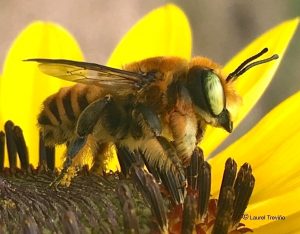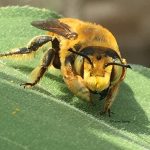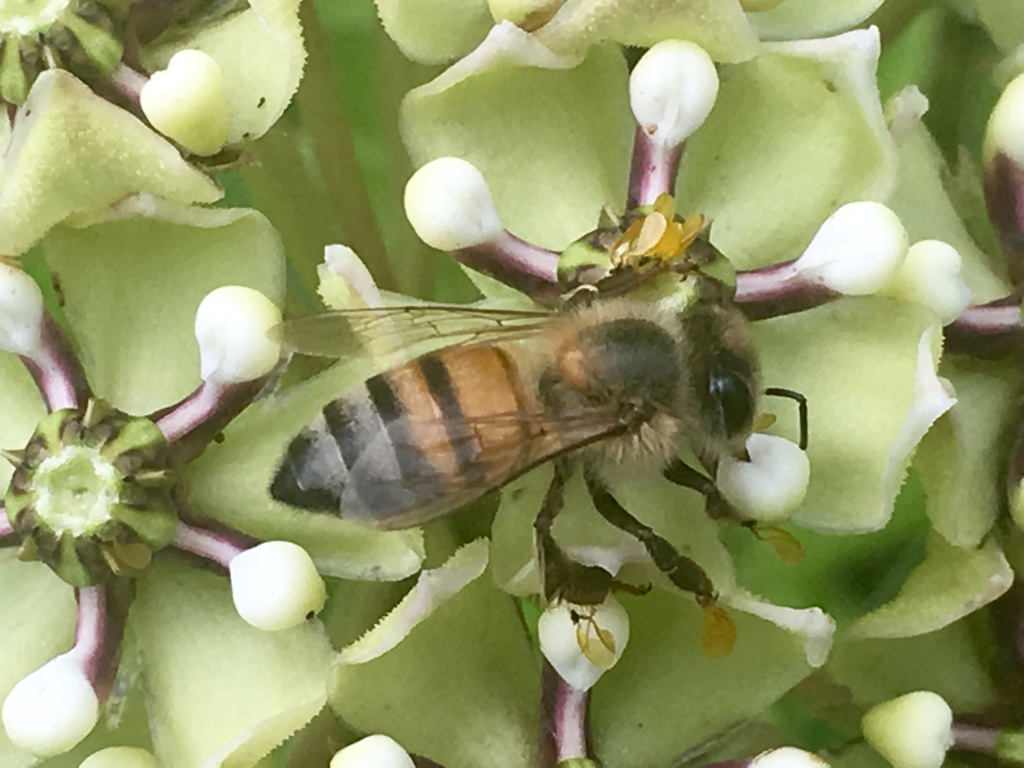Native Bee Wildlife Biology
This page, intended for naturalists, educators, community scientists, and land managers, has information on native bee and butterfly diversity, identification, life history, and management guidelines to conserve insect pollinator habitat.
Naturalists can identify local bees or butterflies with our native pollinator guides. Nature center interpreters may post photo-illustrated species lists of their local native pollinators. Educators may use our resources for their courses. Use this Index to find posters of native bees or butterflies at sites in your ecoregion. The following leaflets have information on native insect pollinator identification, conservation, and surveying.
- Texas Bee & Pollinator ID Guides photo-illustrated species lists
- Texas Bee ID Guide (4 pp., double-sided, short edge bind)
- Pollinator Habitat Conservation leaflet
- Pollinator & Habitat Surveys leaflet
- Leaflet folding layout
Land Managers can use Laurel’s summary guidelines for native bee habitat management below, and native pollinator management guidelines developed by Shalene Jha and the Texas Parks and Wildlife Department.
Land designated for wildlife use can be managed to sustain populations of indigenous wildlife species. Habitat can be managed in addition to the land’s production if activities are not detrimental to the targeted species. Equivalent tax valuations may apply whether land is managed for agriculture, ranching, timber extraction, or wildlife. To transition to wildlife use, a 20-acre land tract must have had an agricultural tax valuation for five years. Texas Comptroller administers special appraisals in County Appraisal District Offices.
For land to qualify for wildlife use, landowners must implement management practices to help sustain breeding populations of a targeted wildlife species. They should design a Wildlife Management Plan (WMP) as a component of their application. In some counties, TPWD biologists or USDA-NRCS Center – Providers may offer general guidance on developing wildlife management plans and completing forms. 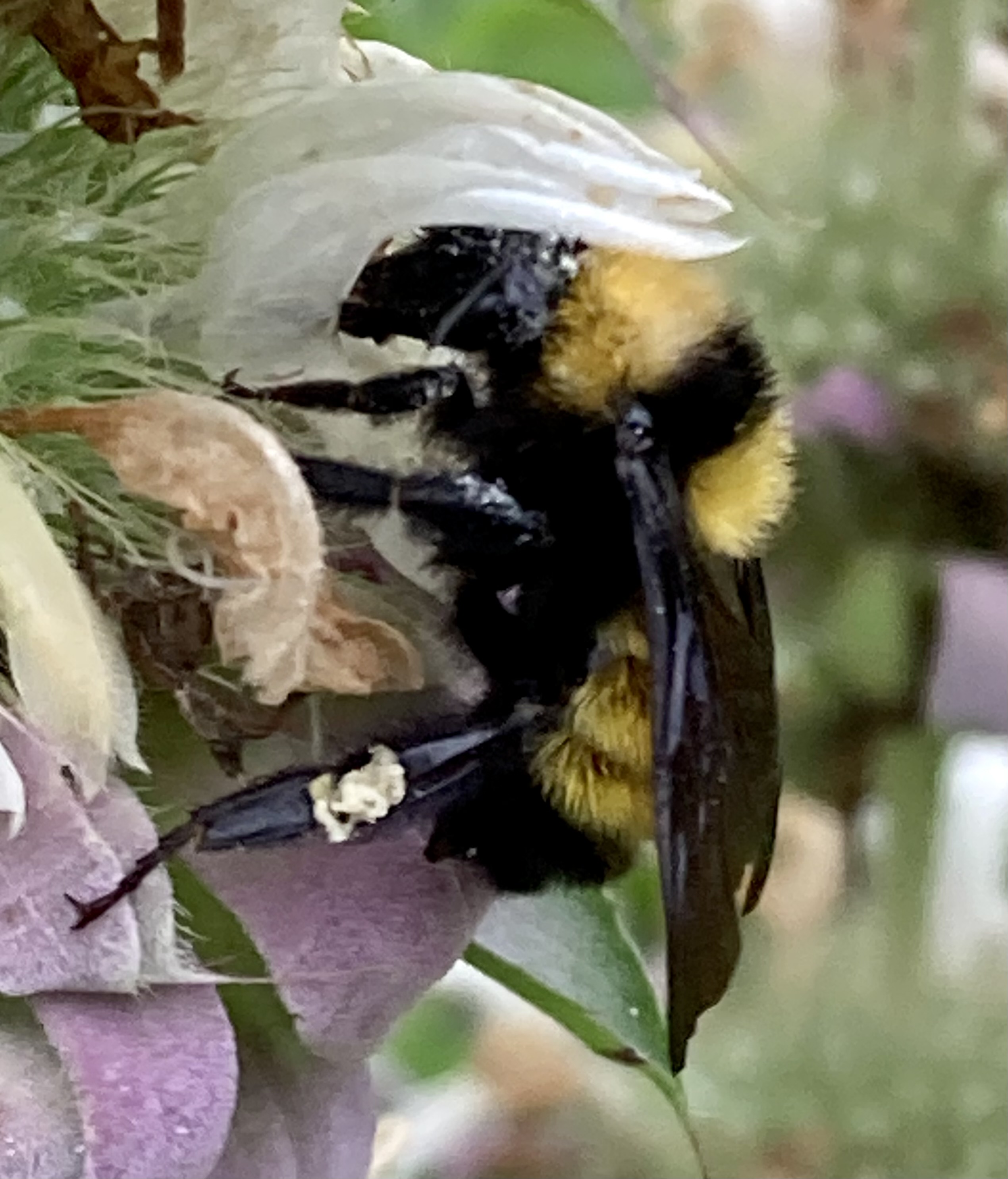
Wildlife Management Plan – Goals and Practices
A land manager’s goal may be to conserve, improve, or restore habitat that is crucial for native wildlife species. Before implementing any management practices, one should assess the wildlife and habitat currently present on the land. For example, one could identify native bees and butterflies, and their habitat’s resources for food & nesting. For native bees, habitat must include resources for ground-nesters and cavity-nesters, while native plants of all habits: trees, shrubs, vines, grasses, and herbs, will provide forage and nesting resources.
Wildlife Management Plans should have the following information.
- A map and description of the property,
- History of land use and wildlife presence,
- Wildlife species currently found on the land,
- Wildlife habitat description,
- Habitat management goals and objectives,
- Management practices and schedules
- Record keeping methods.
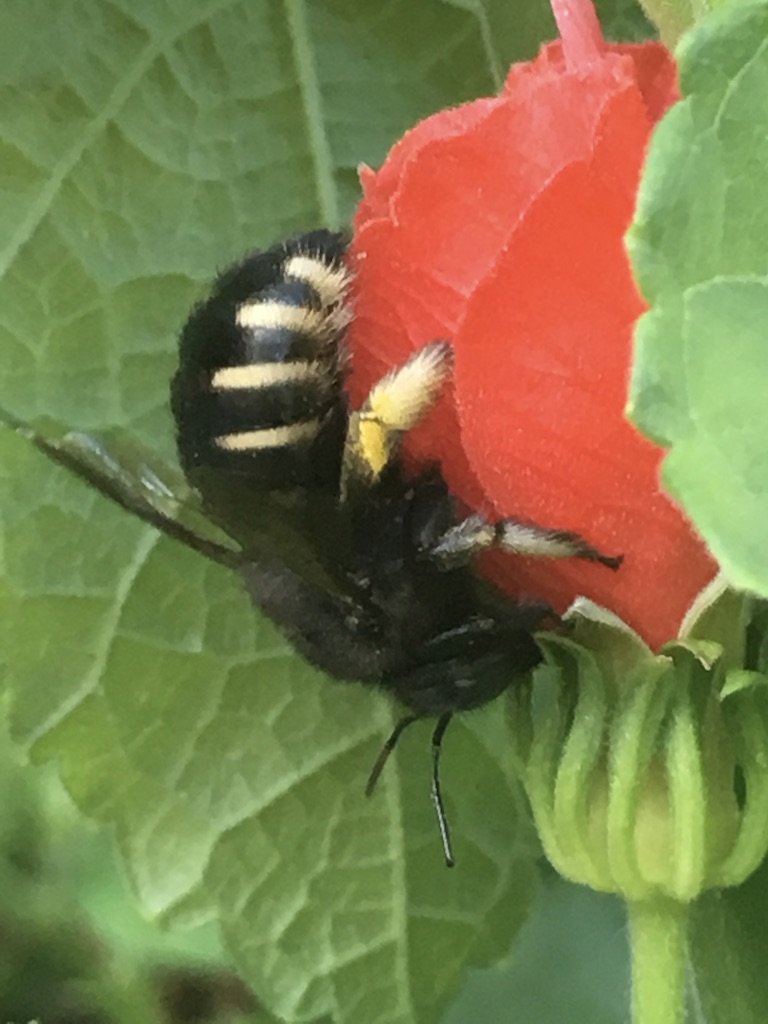
The Texas Parks and Wildlife Department describes seven land management practices in the “1-D-1” form for open spaces. In this Open-Space Form example, Laurel Treviño (Outreach Program Coordinator) indicates all the practices that can apply to native bee habitat management. However, land managers may achieve their wildlife management goals by applying three of seven recommended practices.
Three of seven land management practices are summarized below.
- Provide shelter, water, or food (Texas prairie plants for native bees)
- Manage habitat, erosion, or predators (Pollinator Habitat Conservation)
- Do population censuses or surveys of native species (Surveys)
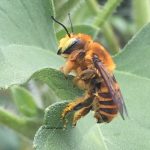
One monitors wildlife populations to gauge the impact of a given management practice on the target species. Monitoring species diversity or abundance requires doing surveys over a three-year period. We encourage the use of our standardized pollinator survey guidelines and data sheets. The Texas Native Bee ID Guide includes the major bee groups that can be monitored as bee species proxies. Survey results must be tallied, analyzed, and graphed to visualize population trends. An upward trend in either richness or abundance indicate that land management practices are beneficial. As a supplement to The Native Bees of Texas Outreach Course, we offer a Pollinator Habitat Survey Workshop.
- Native Pollinator Habitat Management for Tax Valuations (4 pp. double-sided)
- Pollinator Surveys (leaflet summary)
- Survey Data Sheets.pdf (4 pp. double-sided)
- Texas Native Bee ID Guide (4 pp., double-sided, short edge bind)
- Texas Pollinator Guides (species lists per site/ecoregion, Index)
Information on Native Pollinators & Private Lands
- TPWD Native pollinator management
- TPWD Native pollinators & private lands; native bees
- TPWD Wildlife management qualifying agricultural use
- TPWD Agriculture property tax conversion for wildlife
- Texas Comptroller’s Office
https://comptroller.texas.gov/taxes/property-tax/video/wildlife-manage-use/story.html
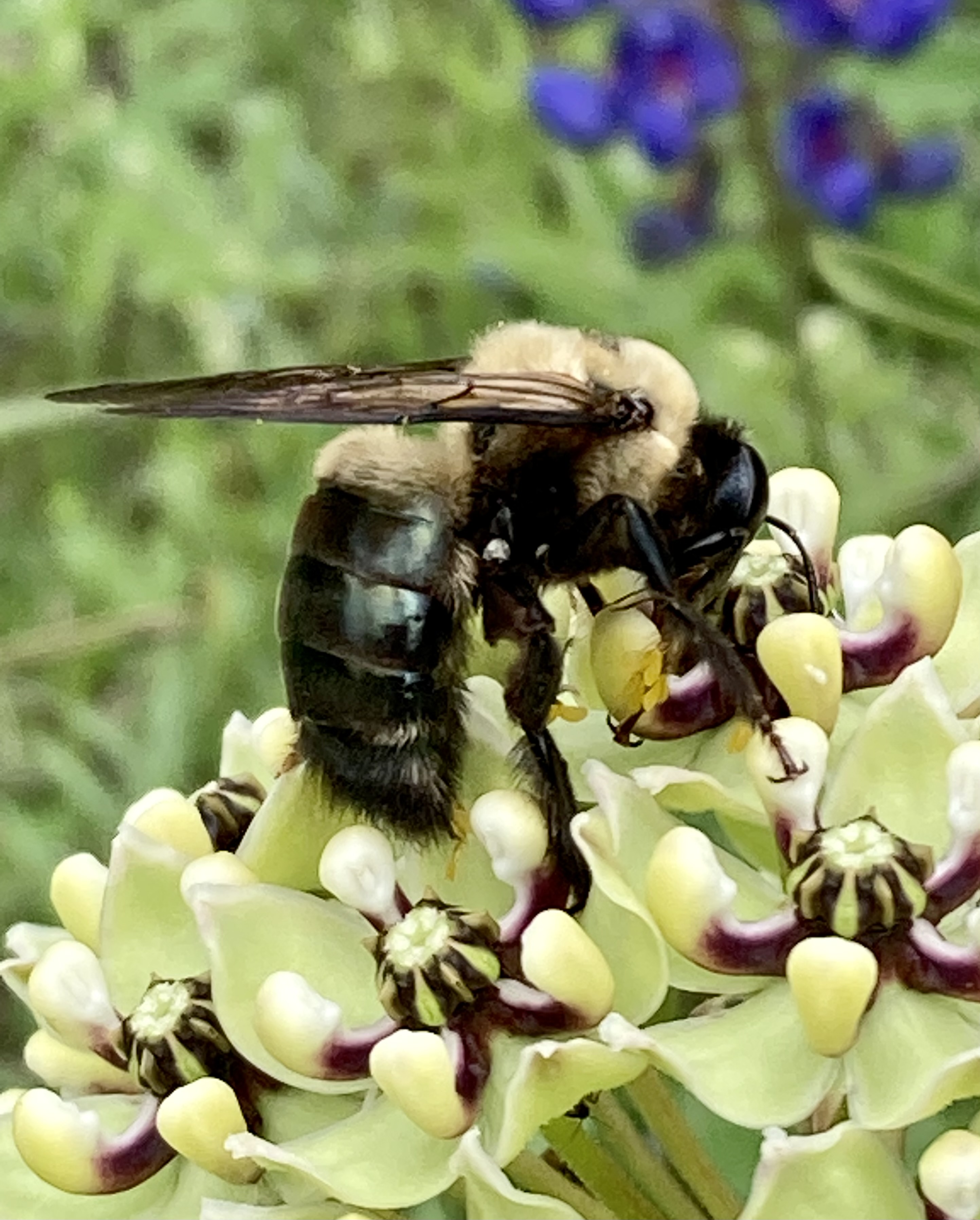 Managing for native bee habitat helps protect other pollinating insects. Native bees need floral and nest resources. Logs, snags, pithy stalks/stems, and grass thatch, help cavity-nesters. Natural vegetation that retains soil and non-compacted ground, helps ground-nesters. Native bees prefer native plants. In subtropical Texas, spring forage includes milkweeds, mealy blue sage, autumn sage, and American basket flower. Sunflowers and aster species carry bee populations through long hot summers. Fall flowers include autumn sage and Maximillian sunflower. Healthy bee communities need diverse and abundant floral resources including wildflowers, bunch-grasses, shrubs, and trees that bloom in sequence. Small populations of native bees forage spring through fall, while large populations of Apis honeybees forage year-round.
Managing for native bee habitat helps protect other pollinating insects. Native bees need floral and nest resources. Logs, snags, pithy stalks/stems, and grass thatch, help cavity-nesters. Natural vegetation that retains soil and non-compacted ground, helps ground-nesters. Native bees prefer native plants. In subtropical Texas, spring forage includes milkweeds, mealy blue sage, autumn sage, and American basket flower. Sunflowers and aster species carry bee populations through long hot summers. Fall flowers include autumn sage and Maximillian sunflower. Healthy bee communities need diverse and abundant floral resources including wildflowers, bunch-grasses, shrubs, and trees that bloom in sequence. Small populations of native bees forage spring through fall, while large populations of Apis honeybees forage year-round.
Beekeepers can help native bees by augmenting native plants in landscapes, providing enough forage and water for their bees year round and keeping honeybees free of diseases. Good beekeepers are good neighbors.

